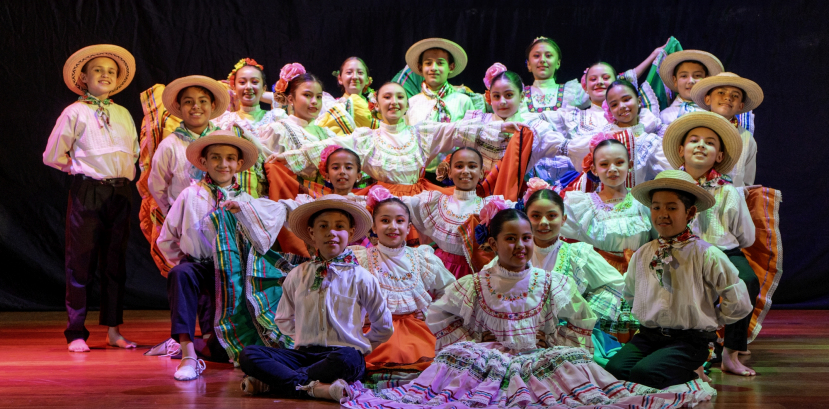In 2012, our Festival was celebrating its twentieth edition. The little Festival publishing market welcomed a jubilee publication: “The Guidebook and Glossary of THE FESTIVAL OF THE CHILDREN OF MOUNTAINS.” Of course, its second part was sure to include the term “Dance.” The authors asked a seven-year-old boy to define this seemingly trivial word. And so the definition was duly delivered: “Pretty and sometimes not so pretty movement by various creatures.”
For many, the most perfect creature is man, so the movements performed by him should be perfect as well.
The creators of the Colombian ensemble COMPAÑIA INFANTIL ESCUELA DE DANZA from Funza worked on the assumption that rhythmic movement performed to music is worth making perfect. Hence, they (Felipe Mendoza) established an ensemble in 1990, which less than a decade later, under the direction of Juan David Barbosa Silva, became a dance school.
And not just any dance school!
It starts at the level of preparation of total “greenhorns” with no prior knowledge or experience. Then, there is the time of being initiated into all the techniques. The next level serves to strengthen the foundation of each dance path. Finally, the young artists take to the stage, develop performances, so that at the top of this ladder they can become advanced elite that with their prowess can justify the many awards they have received and the festivals they have participated in.
In their masterful performance, we will see typical regional dances: Eje Cafetero (contemporary setting), Cundiboyacense, Región Caribe, Región Pacífica. We will hear songs from these lands.
The creators of the Colombian ensemble COMPAÑIA INFANTIL ESCUELA DE DANZA from Funza worked on the assumption that rhythmic movement performed to music is worth making perfect. Hence, they (Felipe Mendoza) established an ensemble in 1990, which less than a decade later, under the direction of Juan David Barbosa Silva, became a dance school.
And not just any dance school!
It starts at the level of preparation of total “greenhorns” with no prior knowledge or experience. Then, there is the time of being initiated into all the techniques. The next level serves to strengthen the foundation of each dance path. Finally, the young artists take to the stage, develop performances, so that at the top of this ladder they can become advanced elite that with their prowess can justify the many awards they have received and the festivals they have participated in.
In their masterful performance, we will see typical regional dances: Eje Cafetero (contemporary setting), Cundiboyacense, Región Caribe, Región Pacífica. We will hear songs from these lands.

